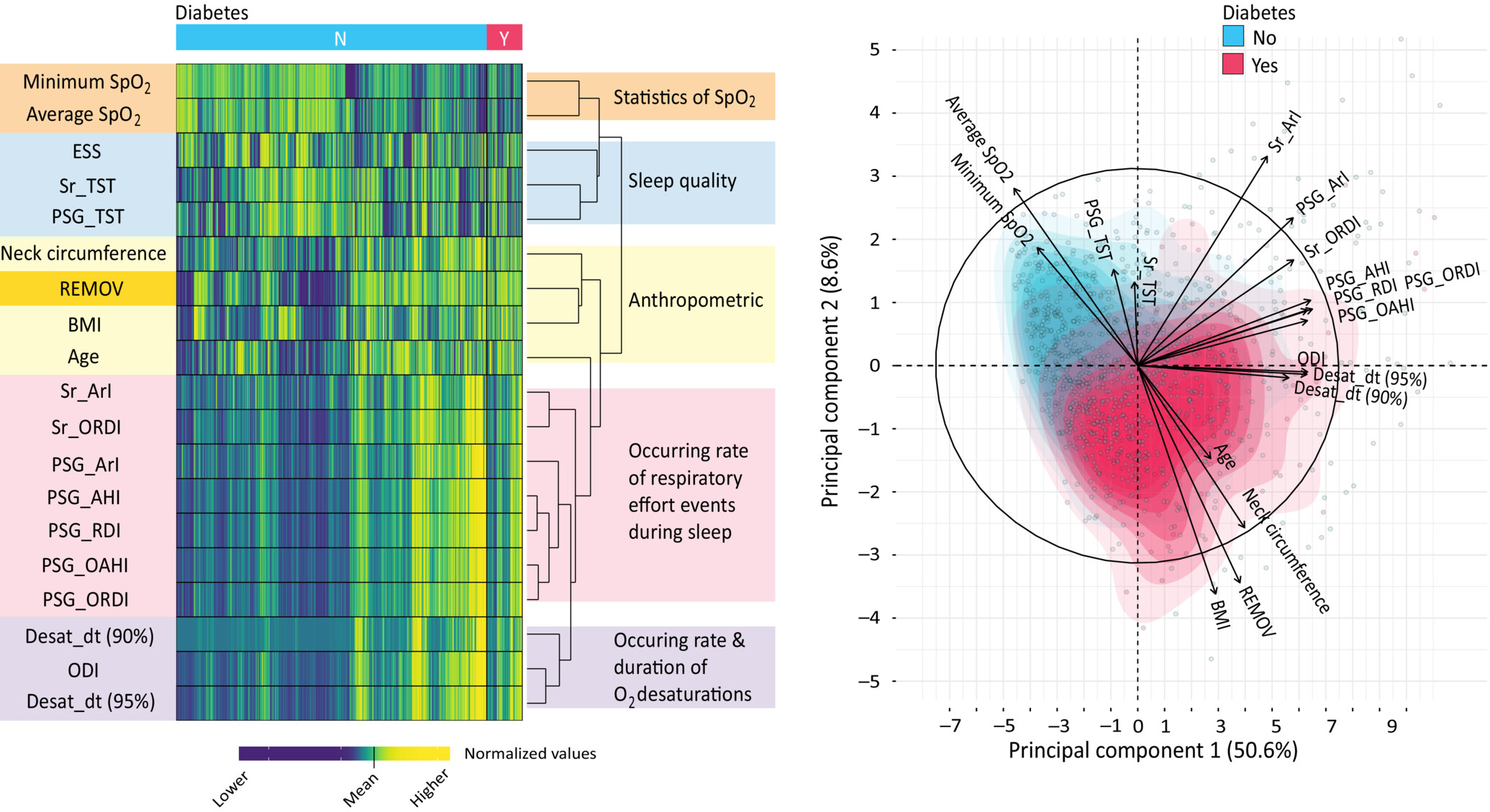Jean-Benoit Martinot, Nhat-Nam Le-Dong, Anne-Laure Borel, Renaud Tamisier, Atul Malhotra, Jean-Louis Pépin
- Share
- Share on Facebook
- Share on X
- Share on LinkedIn

Abstract
Aim
To determine the association between total sleep time (TST) spent in increased respiratory effort (RE) and the prevalence of type 2 diabetes in a large cohort of individuals with suspected obstructive sleep apnoea (OSA) referred for in-laboratory polysomnography (PSG).
Materials and Methods
We conducted a retrospective cross-sectional study using the clinical data of 1128 patients. Non-invasive measurements of RE were derived from the sleep mandibular jaw movements (MJM) bio-signal. An explainable machine-learning model was built to predict prevalent type 2 diabetes from clinical data, standard PSG indices, and MJM-derived parameters (including the proportion of TST spent with increased respiratory effort [REMOV [%TST]).
Results
Original data were randomly assigned to training (n = 853) and validation (n = 275) subsets. The classification model based on 18 input features including REMOV showed good performance for predicting prevalent type 2 diabetes (sensitivity = 0.81, specificity = 0.89). Post hoc interpretation using the Shapley additive explanation method found that a high value of REMOV was the most important risk factor associated with type 2 diabetes after traditional clinical variables (age, sex, body mass index), and ahead of standard PSG metrics including the apnoea-hypopnea and oxygen desaturation indices.
Conclusions
These findings show for the first time that the proportion of sleep time spent in increased RE (assessed through MJM measurements) is an important predictor of the association with type 2 diabetes in individuals with OSA.
- Share
- Share on Facebook
- Share on X
- Share on LinkedIn